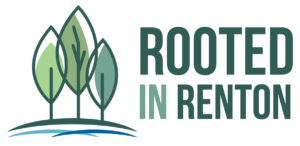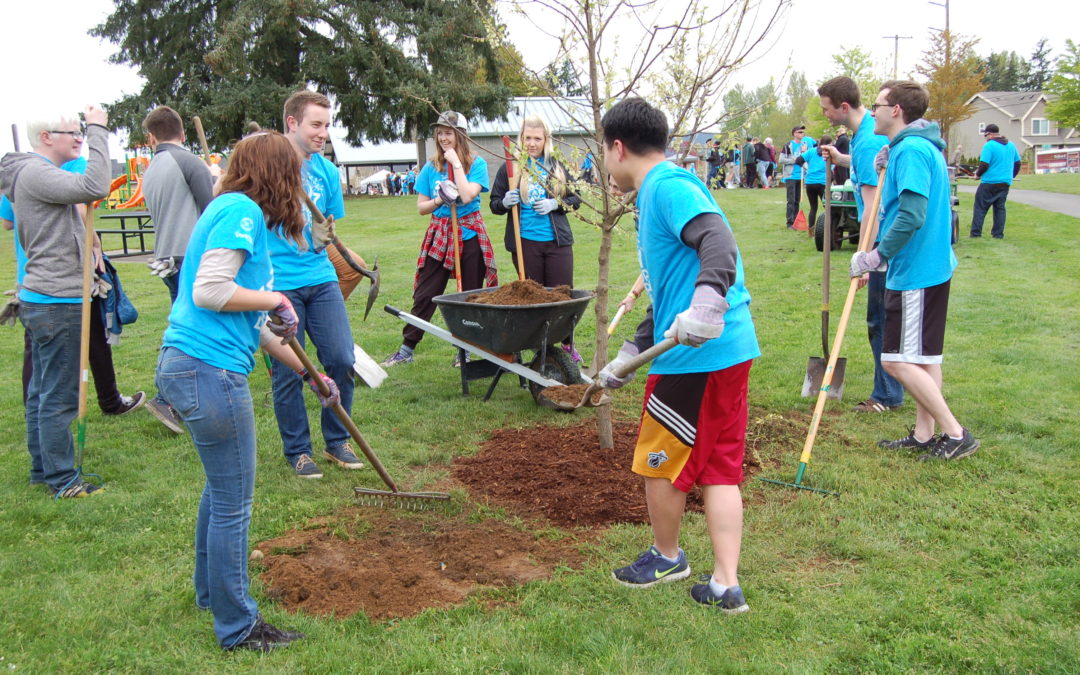The benefits of the existing urban forest are shared by the entire community. Renton’s Urban Forest Management Plan will provide strategic actions to ensure sustained and enhanced long-term benefits are enjoyed by all.
Benefits Provided by Trees
The quality of life of the citizens in any community depends on the urban forest, as trees make a vital and affordable contribution to the sense of community, pedestrian-friendly neighborhoods, energy savings, and air quality. The urban forestry program is critical to meeting the city’s commitment to climate change, carbon sequestration, stormwater reduction, wildlife habitat enhancement, and water conservation. Trees are one of the few infrastructure investments that grow in value over time. The following data was derived from Alliance for Community Trees(1).
More information about the benefits of trees, links to the latest research papers, and other research can be found at the Invest From the Ground Up resource web page (http://investfromthegroundup.org/resources/research/).
1) Alliance for Community Trees. 2011. Benefits of trees and urban forests: A research list. http://actrees.org/files/Research/benefits_of_trees.pdf
Positively Influence Climate to Ensure Sustainability
Trees absorb carbon dioxide and store carbon in wood, which helps to reduce greenhouse gases. Carbon emissions from vehicles, industries, and power plants are a primary contributor to increased air temperatures in metropolitan areas. Trees in the United States store 700 million tons of carbon valued at $14 billion with an annual carbon sequestration rate of 22.8 million tons per year valued at $460 million annually.
Clean the Air and Breathe Easier
Shade trees reduce pollution and return oxygen to the atmosphere. In addition to carbon dioxide, trees’ leaves or needles absorb pollutants, such as ozone, nitrogen dioxide, sulfur dioxide, and some particulate matter.
Save Energy and Lower Energy Costs for Buildings
As natural screens, trees can insulate homes and businesses from extreme temperatures, keep properties cool, and reduce air conditioning utility bills. A 20 percent canopy of deciduous trees over a house results in annual cooling savings of 8 to 18 percent and annual heating savings of 2 to 8 percent. By planting shade trees on sunny exposures, residents and businesses can save up to 50 percent on hot-day energy bills.
Reduce the Need for Street Maintenance
Shaded streets last longer and require far less pavement maintenance, reducing long- term costs. Canopy diminishes pavement fatigue, cracking, rutting, and other damage. A study from University of California at Davis found that 20 percent shade cover on a street improves pavement condition by 11 percent, which is a 60 percent savings for resurfacing over 30 years.
Raise Property Values
Trees are sound investments, for businesses and residents alike, and their value increases as they grow. Sustainable landscapes can increase property values up to 37 percent. The value of trees appreciates over time, because the benefits grow as they do. For businesses, trees have added value, including higher revenues. Shoppers seek out leafy promenades that frame storefronts. Research shows that shoppers spend more—between 9 and 12 percent more—on products in tree-lined business districts.
Conserve Water and Soil
A tree’s fibrous roots, extending into the soil, are premier pollution filtration and soil erosion prevention systems. Intensely urbanized areas are covered with a large number of impermeable surfaces. In contrast to an impervious hardscape, a healthy urban forest can reduce annual storm water runoff up to 7 percent. Highly efficient trees also utilize or absorb toxic substances such as lead, zinc, copper, and biological contaminants. One study estimated that eliminating the need for additional local stormwater filtration systems would result in savings exceeding $2 billion.
Cooler Pavement Diminishes Urban Heat Islands
Broad canopy trees lower temperatures by shading buildings, asphalt, and concrete. They deflect radiation from the sun and release moisture into the air. The urban heat island effect is the resulting higher temperature of areas dominated by buildings, roads, and sidewalks. Cities are often 5° to 10°F hotter than undeveloped areas, because hot pavement and buildings have replaced cool vegetated land. In addition, high temperatures increase the volatility of automobile oil and oil within the asphalt itself, releasing the fumes into the atmosphere. Shade trees can reduce asphalt temperatures by as much as 36°F, which diminishes the fumes and improves air quality.
Protect Wildlife and Restore Ecosystems
Planting and protecting trees can provide habitat for hundreds of birds and small animals. Urbanization and the destruction of valuable ecosystems have led to the decline of many of species. Adding trees, particularly native trees, provides valuable habitat for wildlife.
Build Safe Communities and Decrease Crime
Police and crime prevention experts agree that trees and landscaping cut the incidence of theft, vandalism, and violence by enhancing neighborhoods. Thriving trees on well-maintained streets indicate pride of ownership. Public housing residents with nearby trees and natural landscapes reported 25 percent fewer acts of domestic aggression and violence. Apartment buildings with high levels of greenery had 52 percent fewer crimes than those without any trees. Buildings with medium amounts of greenery had 42 percent fewer crimes.
Calm Traffic and Make Neighborhoods Safer and Quieter
People drive more slowly and carefully through tree-lined streets, because trees create the illusion of narrower streets. One study found a 46 percent decrease in crash rates across urban arterial and highway sites after landscape improvements were installed. The presence of trees in a suburban landscape reduced the cruising speed of drivers by an average of 3 miles per hour. Faster drivers and slower drivers both drove at decreased speeds in the presence of trees.
Trees reduce noise pollution, buffering as much as half of urban noise. By absorbing sounds, a belt of trees 100 feet wide and 50 feet tall can reduce highway noise by 6 to 10 decibels. Buffers composed of trees and shrubs can reduce 50 percent of noise.
Reduce Stress and Improve the Quality of Life
Neighborhoods with generous canopies of trees are uplifting and good for public health. Greater contact with natural environments correlates with lower levels of stress, improving performance. Students’ concentration levels go up when they are able to look out onto a green landscape. Studies show that children with attention deficit disorder function better after activities in green settings.
A green environment impacts worker productivity. Workers without views of nature from their desks claimed 23 percent more sick days than workers with views of nature. Residents of areas with the highest levels of greenery were 3 times as likely to be physically active and 40 percent less likely to be overweight than residents living in the least green settings.


